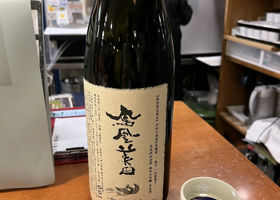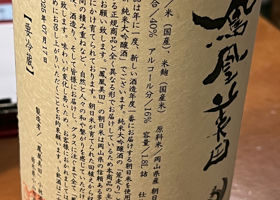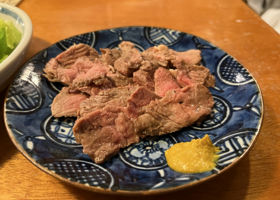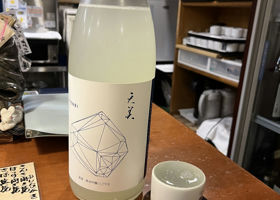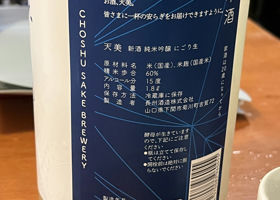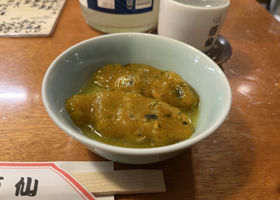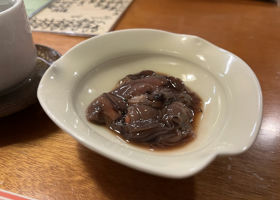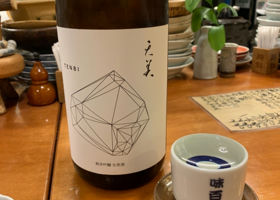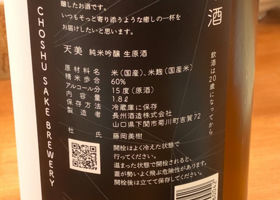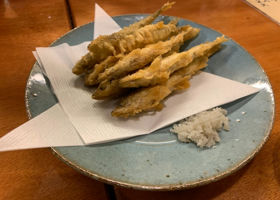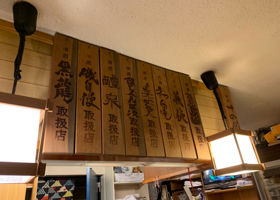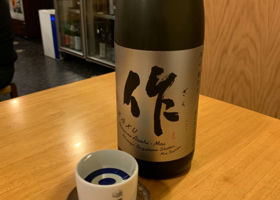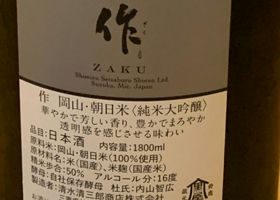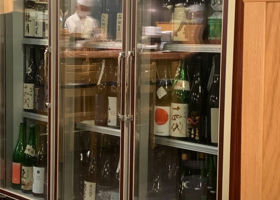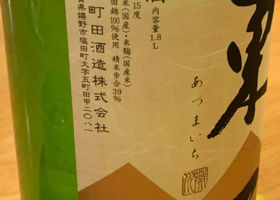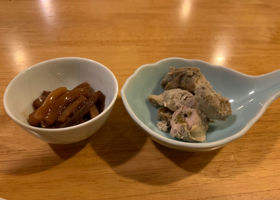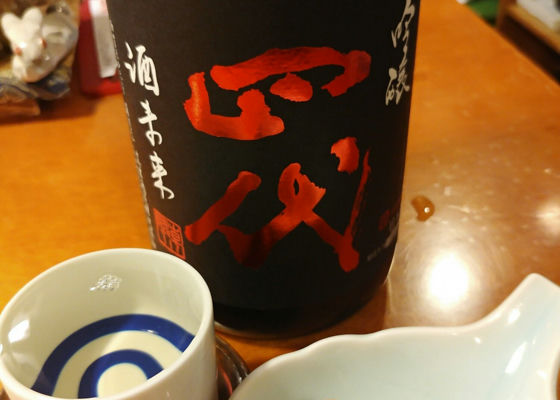Timeline
しんしんSYThe entrée has arrived!
Gyoja garlic sausage and char-grilled lamb!
This restaurant had a bottle of Jyushiyo, but it was a little too expensive!
Then, I'll choose either Houou Mita or Saku, which I love!
We asked them to bring a bottle of Hououmida and decided on Hououmida!
Following Aizan and Yamada-Nishiki, this is Asahi Rice!
At 40% polished, it is a beautiful sake with a deep flavor!
Sweetness with a pineapple feel and a crispness with bitterness at the end!
Wow!
Delicious!
I asked the manager about it later, and he told me that the store was temporarily closed until the 12th due to an employee training trip.
Tomorrow, I have an appointment at my home restaurant, Fukurokuju, so I'll send them a congratulatory gift for their moving-in ceremony and their 9th anniversary 🥂㊗️
Walking home on the snowy road so as not to fall down!
I'm glad I found a new place to live in a nice place to walk home from Sapporo station. ❄︎
extensive knowledge
Rice:100% Asahi rice produced in Okayama prefecture
Rice polishing ratio: 40
Alcohol content: 16
Number of brewing:001 Tenbi新酒 純米吟醸 にごり生(雪天)純米吟醸生酒にごり酒発泡 しんしんSYYour move is complete✅.
Finished the work afterwards, now let's do some 🤏.
shigi38, Port Town Monkichi, temporarily closed, full house, couldn't get in.
It's snowing steadily outside: ☃️
Then let's try this place.
Ajihyakusen, a long-established restaurant 💯.
We were told to go to the counter in front of the first table.
We shake off the snow, take off our coats, and look intently at the sake menu.
Oh, I'll have this one, Yukiten!
The owner opens the bottle slowly, slowly, slowly.
The sizzle of the first sip!
It's full of what Kotori-san often calls "chiri-chiri-ness"!
It tastes like Sakura Sakura Sakura nigori!
It's the season for new sake!
I'd like to enjoy it tonight with a light side dish 😊.
a little bit of knowledge
Rice polishing ratio: 60
Alcohol content: 15%. ことりHello Shin-san 🐥.
I finally had a taste of Yukiten ❗️ it was a delicately delicious sake with a fine chili texture 😚.
Thank you for your recent move 😌I'm glad you'll be able to spend more time settling down with less frequent travel ✨. しんしんSYIt has been a very long time, Kotori-san, and it has already been a year since we met Mr. and Mrs. J&N and Kotori-san. It's almost the season for Jikkai Aizan, isn't it? Everyone is drinking and enjoying Yukiten. Colonel Lal is also 🍶. くま ゆみIt was a refreshing, slightly sparkling wine that went well with the grilled shishamo. くま ゆみSkimpy and easy to drink.
The label was sparkling. Tenbi純米吟醸 生原酒 (白)純米吟醸原酒生酒 しんしんSYTime is running out.
I'm going to drink all the Hiryu in one go, and then finish with the next drink.
Hmmm, I'm having trouble!
I found a bottle of "Yorokobi" (meaning "joy" in Japanese) and asked for it, but it was still in the bottle so I couldn't get it.
If that's the case, I'll go with the surefire Tenbi!
The fruity, sweet and sour taste is a bit bigger than the Hiryu!
I paired it with freshly fried Wakasagi tempura and enjoyed it!
We are now a dealer for a famous sake brewery!
Skepticism
This is an unpasteurized sake that is only available during the brewing period and in limited quantities.
Our goal is to create a sake that can accompany meals with a gentle and refreshing aroma, a soft sweetness and acidity like white grapes, and a freshness reminiscent of citrus.
Rice : Yamadanishiki
Polishing ratio : 60
Yeast : 901
Alcohol : 15% (unpasteurized)
Place of origin : Yamaguchi prefecture, Choshu Shuzo しんしんSYThe third glass was Saku Junmai Daiginjo.
I ordered a bottle of Masanochi, but this came out.
Since it was my first time, I poured a whole lot of it.
It was as fresh and fruity as the Mimuro Sugi, and I loved it.
Tomorrow, I have to leave early and somehow make it to New Chitose Airport.
knowledge
I would like to introduce you to a limited edition sake made with Asahi rice from Okayama Prefecture. 100 years ago, in 1922, Asahi rice was born, but it is still in use today, adding color to our tables. It has a warm aroma like freshly cooked rice that Japanese people love, and a rich, full flavor. It has a warm aroma like freshly cooked rice that Japanese people love, a rich and full flavor, and a full-bodied mellowness that will make you fall in love with Asahi.
While it is very light to drink, the taste is full of umami and has a perfect balance of lightness and heaviness. At the end, you can feel the fresh and crisp flavors typical of the saké, and it finishes with a subtle aftertaste. 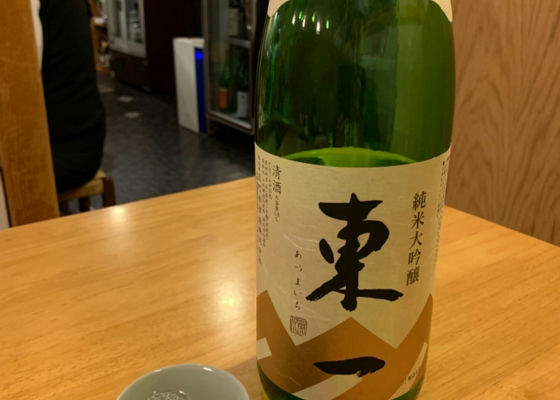
しんしんSYDue to the heavy snowfall, I could not escape from Sapporo and could not return to Tokyo. So I stayed one more night in Sapporo.
I visited a famous restaurant next door to the one I often go to, not the one I went to yesterday, but I was allowed in.
Toichi, which I drank in Saga Ureshino, and Junmai Daiginjo, which I raised the rank of, were there, so I ordered it immediately.
To be honest, it didn't give me as much pleasure as I expected (sorry).
(I'm sorry.) It goes well with pickled squid, oysters and gorgonzola.
knowledge
Toichi's Junmai Daiginjo sake is carefully tanked one by one using shizuku-tori. The two main types of sake used are Ararunushi, which is the first part of the sake to be pressed, and Tameshi, the last part.
The sweet, tropical fruit-like aroma of the ginjo is typical of Toichi, which grows its rice from scratch and tries to maximize its flavor. It has a glossy texture that will make you swoon, and the gentle sweetness that envelops your mouth is the very embodiment of a mellow umami taste. It is a wonderful sake that leaves a refreshing umami taste and a lingering aftertaste. RecommendedContentsSectionView.title
